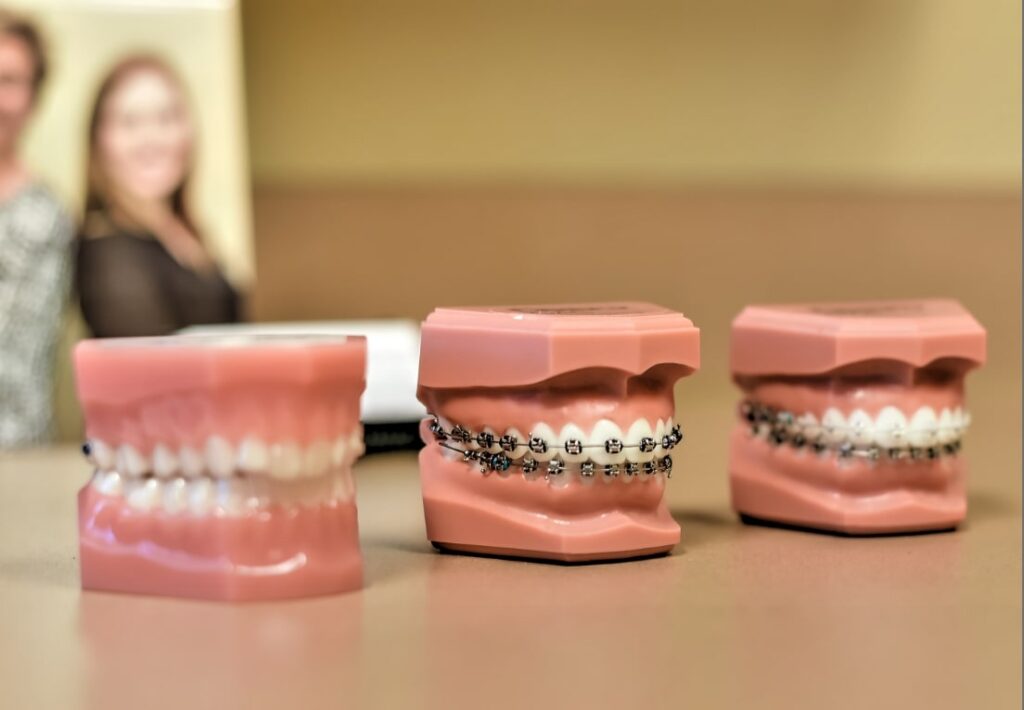Why Cumming Invisalign is the Perfect Selection for a Discreet Orthodontic Service
Why Cumming Invisalign is the Perfect Selection for a Discreet Orthodontic Service
Blog Article
Comprehensive Overview to Orthodontics Treatments for Correcting Dental Misalignments
Recognizing the details of each treatment, including their mechanisms, advantages, and potential downsides, is essential in making notified decisions concerning one's orthodontic treatment. As we navigate via the comprehensive overview to orthodontic procedures for remedying dental misalignments, the detailed information of each technique will certainly unravel, losing light on the course toward a harmonious and useful dental placement.
Orthodontic Procedures Summary

Along with clear aligners and conventional dental braces, orthodontists may likewise recommend other interventions like headwear, palatal expanders, or retainers to deal with particular positioning concerns (invisalign). These treatments are tailored to each person's one-of-a-kind requirements and might involve a mix of therapies to achieve the wanted results. Normal modifications and monitoring are crucial components of orthodontic therapy to ensure progress gets on track and to make any type of required modifications along the method. By going through orthodontic treatments, patients can not only achieve a straighter grin however also enhance their total dental wellness and feature.
Typical Braces: Exactly How They Function
When considering orthodontic treatments for dental misalignments, standard braces stand out as a tried and true technique for dealing with teeth positioning. Typical braces include braces, cords, and bands that interact to apply constant pressure on the teeth, gradually moving them into the wanted placement. The braces are connected to the teeth using an unique adhesive, and the cords are threaded through the braces. By changing the tension of the wires, orthodontists can manage the instructions and pressure used to each tooth, assisting them right into correct placement in time.
As pressure is applied to the teeth with the dental braces, the bone bordering the teeth is reshaped to support the brand-new tooth settings. Clients will need routine adjustments at the orthodontist's workplace to guarantee the dental braces proceed to use the appropriate pressure for efficient teeth movement.
Unseen Aligners: Advantages And Disadvantages
Undetectable aligners provide a discreet and practical choice to conventional dental braces for remedying dental misalignments. These clear, custom-made trays are basically unseen when put on, making them an appealing alternative for people looking for an extra aesthetically pleasing orthodontic therapy. Among the key benefits of undetectable aligners is their removability, permitting simpler upkeep of dental hygiene compared to typical dental braces. People can remove the aligners before consuming or cleaning their teeth, reducing the threat of food additional hints obtaining stuck in the appliance and streamlining the cleaning process.

Surgical Orthodontic Options
Surgical interventions in orthodontics present practical alternatives for addressing complex oral misalignments that may not be properly fixed via traditional orthodontic therapies. While unnoticeable aligners and standard braces can remedy many orthodontic problems, specific cases call for surgical treatment to achieve optimal results. Surgical orthodontic choices are generally recommended for severe malocclusions, substantial jaw disparities, and cases where the underlying bone structure requires adjustment to attain appropriate alignment.
One typical surgical orthodontic treatment is orthognathic surgical treatment, which includes repositioning the jaws to correct functional concerns such as problem eating or speaking. This surgical procedure is usually executed in collaboration with an orthodontist who aids align the teeth prior to and after the treatment. Surgical orthodontics might also include treatments to expose impacted teeth, get rid of excess gum tissue, or improve the jawbone to produce a more harmonious facial profile.
Before taking into consideration medical orthodontic options, people undertake a thorough examination to identify the necessity and potential advantages of such treatments. cumming braces. While surgical procedure might seem daunting, it can substantially enhance additional info both the feature and visual appeals of the smile in cases where conventional orthodontic treatments fail
Retainers and Post-Treatment Treatment

Failing to comply with post-treatment treatment directions can result in relapse, where the teeth progressively move back in the direction of their original settings. Consistent retainer wear, excellent dental hygiene, and regular dental check-ups are necessary for maintaining the outcomes accomplished through orthodontic surgery and making sure the long-term stability of the fixed dental placement.
Verdict
In verdict, orthodontic treatments provide numerous alternatives for remedying oral imbalances. Surgical orthodontic alternatives are readily available for much more extreme imbalances. Overall, orthodontic procedures can properly improve dental health and visual look.
As we browse through the thorough overview to orthodontic procedures for remedying dental imbalances, the detailed details of each technique will unravel, shedding light on the course toward a unified and practical dental placement. - braces
One of the most usual orthodontic treatments is the use of braces, which are composed of metal brackets and cords that use gentle stress to gradually move teeth into the wanted setting.When thinking about orthodontic treatments for oral imbalances, typical braces stand out as a time-tested approach for correcting teeth positioning. In addition, invisible aligners might not be ideal for complex orthodontic issues that need more substantial teeth movement, as they are generally suggested for light to modest situations. Retainers are customized orthodontic gadgets developed to i was reading this hold teeth in their fixed placements after the conclusion of orthodontic treatment.
Report this page